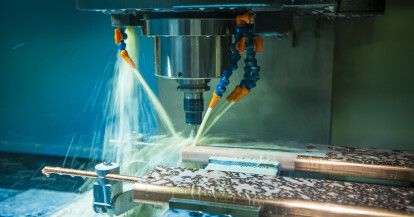Copper in a "pill" - cooper types and properties

How well do you know the properties of copper? Whether you are just starting to work with this versatile material or you are a specialist, it is worth reminding yourself of them.
As experts on the "red metal" we have compiled for you the following text, which contains the most important information about copper and its types - make sure you know them all!
What is copper? What are the properties of copper?
Pure copper is a fairly soft metal with excellent thermal and electrical conductivity. Thanks to its low hardness, it can be plastically processed cold and hot. On the table of elements it lies in the 11th group, next to silver and gold, because it has a similar electronic structure. It is distinguished from many metals by its characteristic orange-red color. Exposed to air, the surface of copper oxidizes and darkens. In moisture - it gets covered with a green patina, such as on the Statue of Liberty.
Even repeated processing does not adversely affect the properties of copper, so this semi-precious metal can be recycled, just like iron and aluminum. This is a much cheaper and more environmentally friendly form of obtaining copper compared to mining it.
Copper - types and alloys
If the copper content in the metal is predominant, the raw material is an alloy of copper (exceptions are alloys of silver and gold, which may contain only about 10% of these metals).
- Depending on the mixture, it can take on a color ranging from yellow to brown. The alloy is harder than pure copper, features corrosion resistance and can be cast.
- Brass - an alloy of zinc (20-45%) with copper and other metals (5-6%). Great for cold and hot working, it is strong and also corrosion resistant.
- Copper-nickel - contains more than 2% nickel and other metals. Copper-nickel alloys are strong, resistant to corrosion and amenable to processing. As a result, they are used to produce sheets, pipes, rods and wires.
Copper grades are also described by symbols - below we briefly describe the use of copper divided by type.
- M1E - cathode copper, a material for making electrodes and more.
- M1R, M2R, M3R - types susceptible to welding, used, for example, in construction, where electrical conductivity is irrelevant.
- MHY - chromium-zirconium copper, very electrically conductive and hard.
- MN25 - an alloy used for making coins.
- MNM441 - cupronickel for resistors of measuring devices and other components in the electronics industry.

Copper - healing properties
As a chemical element, copper is one of the key metals in living organisms. Its health properties include benefiting the immune system, cancer prevention and fighting free radicals.
Interestingly, zinc blocks the absorption of copper, so copper deficiency can be caused by excessive consumption of seafood and dairy products. Excess copper (intake of more than 0.9 mg of the element per day) causes nausea, heart disorders and muscle pain.
Copper is also used for medicinal and hygienic purposes - you can read more about this in our post "Copper's antibacterial properties."
Copper thermal conductivity and electrical properties
Electrical and thermal conductivity are the qualities that make copper find so many applications. Mainly this metal is used in the electrical industry to make wiring, electromagnets, integrated circuits or printed circuits. Thermal properties allow copper to be used in the manufacture of refrigeration and air conditioning equipment.
Don't forget that copper is also a raw material for creating our components, including bus bars, connectors, and many other materials. Thanks to the use of modern technologies and circular processes, we prepare a multitude of components for almost every industry. Cooperation with Electris is a guarantee of supplying excellent quality copper and aluminum products, as well as full service to our customers - 360 degrees.



